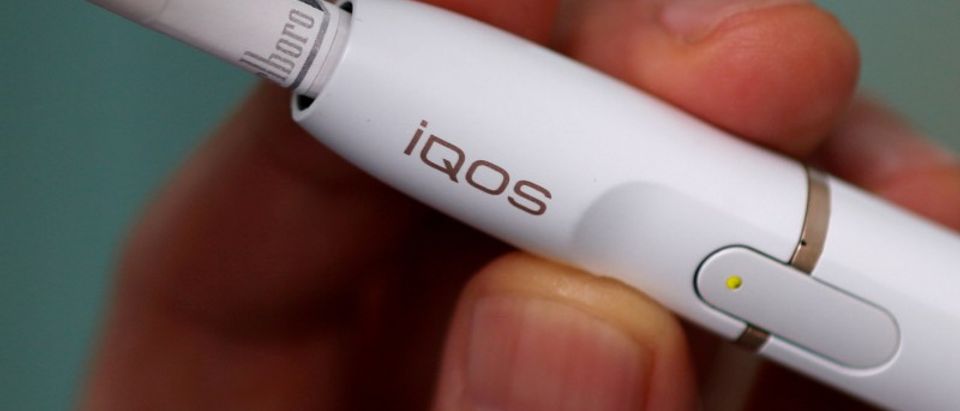Recent headlines have suggested that the sales of heat-not-burn products (also known as “heated tobacco products”) have slowed in Japan, the leading market for the products. The stock price of Philip Morris International, maker of the leading iQos (Marlboro HeatSticks) brand suffered their biggest ever drop, and pessimistic predictions were made about the promise of the category. The reality is, however, that Japanese sale of HnB continues to grow, at the expense of standard cigarettes.
Between the iQos launch in 2016 and the end of last year, the category captured about 16% of the Japanese market, with cigarette sales down sharply. British American Tobacco also has a product in the market and Japan Tobacco will be launching one soon. Japan is probably the best-case scenario for HnB, with a wealthy and tech-friendly population, relatively high cigarette prices, and a pent-up demand for alternatives (e-cigarettes containing nicotine are banned there and there is a strong cultural aversion to snus). Still, this is an impressive performance. Sales continued to creep up this year, which is even more promising. This is the supposed “slowing” of sales; it was not a reduction in sales, but merely a reduction in the rate at which sales were growing.
This contrasts with Japan Tobacco’s failed experiment with their Zero Style Mint product in 2010. That product, basically a tube that let you suck room-temperature air across snus, was unsurprisingly not a satisfying experience. It did, however, have a huge sales bubble after it was introduced due to the pent-up demand for alternatives. The bubble collapsed after consumers discovered they did not like the product. The uptake of HnB was no bubble. The collapse in demand that might have happened did not.
The sales growth rate obviously could not last forever. The number of smokers who were ready to jump on any alternative is finite. With the product proving popular, more smokers will continue to switch, motivated by social contagion — i.e., the more people who are doing something, the more who tip into doing it. But there is an upper limit, with many smokers having no interest in switching, at least to a particular product (thus the value of having multiple options). Investors exhibited irrational exuberance, driving up the value of PMI stock based on the apparent assumption that the iQos would continue to take another ten percentage points of the market every year, forever, and perhaps would do so in other countries also. When that (inevitably) did not happen, the stock “crashed,” meaning it dropped back down to a realistic value.
Anyone familiar with the modeling of e-cigarette uptake that I did six years ago would have been able to predict this. But no one asked me. The models show that a second period of fairly rapid growth is possible, due to social contagion effects, after an initial surge and plateau. Of course it is impossible to predict the exact numbers because we do not know how popular the product will be and how strong the social contagion effect is. It seems safe to predict that the ratio of initial to contagion effect is higher than for e-cigarettes. That is, the next growth phase will be relatively modest, even though it was larger for e-cigarettes. “Smoking” a HeatStick is not a big leap from smoking, whereas vaping raspberry strudel e-liquid from a box mod is a leap in behavior and technical knowledge that becomes much easier if friends are already doing it.
Outside Japan, there is also the issue of the pent-up demand for alternatives already being absorbed by e-cigarettes (or snus in a few North Atlantic countries). Again, Japan is pretty much the best-case scenario for HnB to become popular.
The situation in the U.S. is uncertain. The iQos and HnB more generally are pretty much the perfect products to get FDA approval as “modified risk” (i.e., lower risk) products or simply as new products. They are like cigarettes and made by major tobacco companies, and the FDA is far more positive about both of those than they are about independent vapor products. The FDA’s scientific advisory panel issued an insane (non-binding) opinion about PMI’s reduced risk claim, in which they endorsed the evidence there is huge reduction in exposure to harmful chemicals compared to smoking, but refused to endorse the conclusion that this means there is lower health risk. The FDA could choose to ignore this and grant approval as a “modified risk” product, or it could simply approve HnB products as new products.
This story, however, has an ominous subplot. Allowing these products on the market will make it easier to ban vapor product flavors or entire segments of the category. The argument will go that heat-not-burn products will appeal just fine to smokers who want a low-risk alternative without having “kid-friendly” flavors or USB ports. After all, just look at how well they have done in Japan.
Follow Dr. Phillips on Twitter


